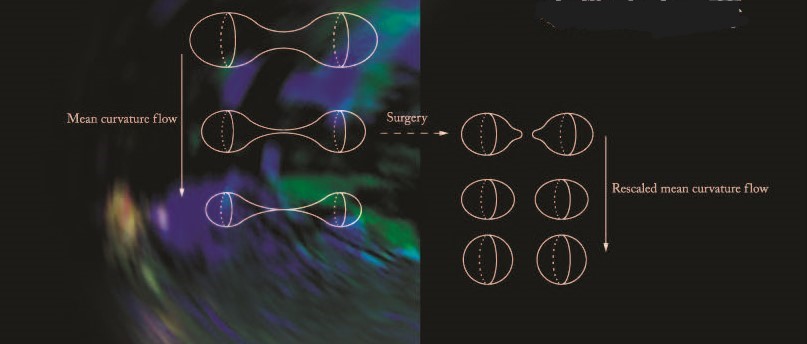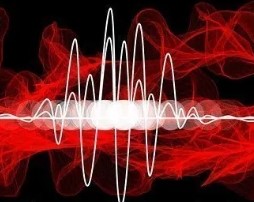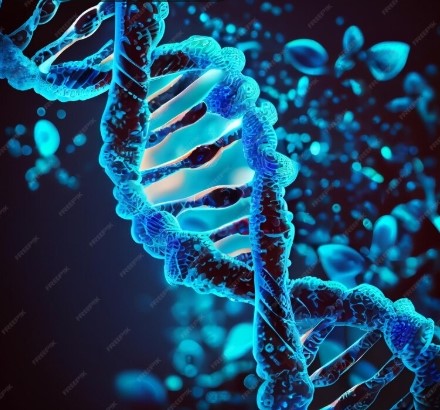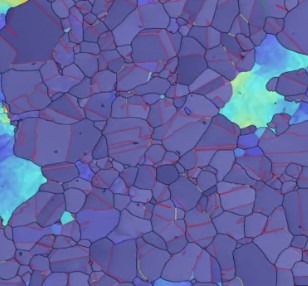
RIST TUS
Division of Joint Research of Geometry
and Natural Science
ABOUT
In this research division, we aim to construct the comprehensive geometric
theory for the quantum mechanics, the condensed matter physics, molecular
biology and grain boundary-composite materials mechanics, and feedback
it to the above four fields. The geometry is divided broadly into three
fields of the differential geometry, the topology and the algebraic geometry.
In the differential geometry, it was originally aimed to research a differential
manifold M equipped with a geometric structure g (where a differentiable
manifold means the space where the continuity and the differentiability
of maps between the spaces can be defined) and investigate the properties
of figures in the space (M,g) which are invariant under transformations
of M preserving g invariantly. Note that the whole of such transformations
of M preseriving g invariantly is a Lie group (that is, a differentiable
manifold equipped with a suitable group structure). Later, in the differential
geometry, it also has been aimed to research the theory of the connections
of principal bundles and vector bundles over the space (M,g) in order to
research the gauge theory (in the thoretical physics) from the viewpoint
of the differential geometry. For example, the theory uinfying the gravitational
field and the electromagnetic field is researched on the principal bundle
having the unitary group U(1) of degree one as the structure group over
a 4-dimensional Lorentzian manifold (M,g). Thus the differential geometry
is closely connected to the theory of Lie group actions and the gauge theory,
and hence can be applied to the researches of the quantum mechanics and
the condensed materials physics. In the geometric analysis (which is researched
using both the differential geometry and the analysis), the mean curvature
flow and the harmonic flow etc. are researched, where the mean curvature
flow means the gradient flow of the (-1)-multiple of the volume functional,
and the harmonic flow means the gradient flow the (-1)-multiple of the
(usual) Energy functional). We aim to apply these researches to those of
the grain boundary and the cluster. Also, we aim to apply these researches
to that of the shape of double helices of polydeoxyribonucleotides constructing
DNA etc. in the molecular biology. Furthermore, we aim to apply the research
of the strength of the grain boundary to that of the composite materials
mechanics.
The topology aims to research a toplogical space X (where can be defined
the continuity of maps between the spaces) and investigate the properties
of the figures in X which are invariant under continuous transformations
of X. Also, the various algebraic topological invariants (for example,
the homotopy group and the homology group) are used in this research. The
knot theory is very important in the research field of the topolgy and
the research of DNA・RNA. The kont means a circle S^1 continuously embedded
into the 3-dimensional sphere S^3 (or the 3-dimensional Euclidean space
R^3). Here we note that knots in R^3 are regarded as knots in S^3 because
R^3 is identified with an open portion of S^3. Main research thema of the
knot theory is to investigate whether two knots in S^3 are mapped to each
other by a homeomorphism of S^3 (=a continuos one-to-one map of S^3 onto
oneself such that its inverse also is continuous). The knot theory is important
in the research of the topoloogical global structure (the structure of
double helices) of polydeoxyribonucleotides constructing circular DNA (in
the molecular biology). Also, knots and the mapping class group are sometimes
researched by using the gauge theory, which is one of so-called the topological
field theory.
In the algebraic geometry, are researched the structure of the common sero-point set of some polynomials over the affine space or the projective space. This research is used to investigate the moduli space of the space of various kind of connections of the principal bundle and hence is applied it to various reseaches of the gauge thoery.
As above, each research field of the geometry are connected closely to
those of the quantum mechanics, the condensed matter physics, molecular
biology and grain boundary-composite materials mechanics. In detail, we
aim to perform the following four researches.
I.The research of the condensed matter physics in the view-point of the gometric
varitional theory
The members of this reserach group aim to perform the following researches.
In the sequel, the cluster means the cluster material composed of some
atoms connected by the metallic bond, the covalent bond and the ionic bond.
We grasp such a cluster material as a graph with the weight and the color,
where the vertices implies the atom nucleuses of the atoms constructing
the cluster material, they are connected by an edge in the case where two
vertices (the atom nucleus) are binded and the weights are given to edges
of the graph according to the degree of the bond strengths and the colors
are given to vertices of the graph according to the structure of the atom
having the vertex as the atom nucleus. Denote by V(G) the set of all vertices
of the graph G and E(G) that of all edges of G. The graph G is defined
as the pair (V(G),E(G)) precisely. For two v,w∊V(G), when there exists
the edge connecting v and w, we denote it by |vw|. Also, denote by m(e)
the weight of e:=|vw| and C(v) the color of v. Denote by |\vec{vw}| the
edge e:=|vw| given the orientation going from v to w and |\vec{wv}| the
edge e:=|vw| given the orientation going from w to v, where |\vec{vw}|
denotes the notation given → on |vw| and |\vec{wv}| also is similar. The
correpondence O defined by assigning an orientation O(e) of e to each edge
e∊E(G) is called an orientation of G. The quadruple (G,m,C,O) is called
an oriented graph with weight and color.
For an oriented graph (G,m,C,O) with weight and color, denote by |G| the
sum of all edges of G. Note that |G| is not embedded into 3-dimensional
Euclidean space R^3 yet. It is important to investigate how the shape of
the cluster material is in R^3, that is, how |G| is imbedded into R^3.
We plan to investigate the shape of the cluster material in R^3 from the
view-point of the geometric variational theory as follows. Denote by Map_{PS}(|G|,R^3)
the space of all piecewise smooth maps of |G| into R^3. Take a suitable
energy functional E_{m,C} (over Map_{PS}(|G|,R^3)) depending on the structure
of |G|, the weight anf the color and find critical points of -E_{m,C}.
Let f(∊Map_{PS}(|G|,R^3)) be one of the critical points. Then we interpret
that f(|G|) is the shape of the stable state of the cluster material in
R^3.
Also, we define a fibre bundle π:E → R^3 over R^3 depending on the color C and plan to investigate the shape of |G| in the total space E. We plan perform this investigation as follows. Denote by Map_{PS}(|G|,E) the space of all piecewise smooth maps of |G| into E. Take a suitable energy functional E_m (over Map_{PS}(|G|,E)) depending on the structure of |G| and the weight and find critical points of -E_m. Let f(∊Map_{PS}(|G|,E)) be one of the critical points. Then we interpret that f(|G|) is the shape of the stable state of the cluster material in E.
Furthermore, we plan to define a suitable subdivision of an oriented graph
with weight and color and investigate whether the analoguous space obtained
by repaeting to take this subdivision in infinite time is a Riemannian
manifold with affine connection (or in more general, a measured metric
space with a connection). Here a Riemannian manifold with affine connection
means a manifold M equipped with a Riemannian metric g and an affine connetion
∇ on M, where g is a (0,2)-tensor field on M defined by assigning an inner
product g_p of the tangent space T_pM of M at p to each p∊M) and an affine
conncection ∇ (which defines the parallel translation P_c:T_{c(0)}M → T_{c(1)}M
along each curve c:[0,1] → M), and a measured metric space with a connection
means a metric space equipped with a measure and a kind of connection (defining
the parallel translations along a kind of continuous curves).
II. The research of the quantum walk in the view-point of the gometric
gauge theory
The members of this reserach group aim to perform the following researches.
The gauge theory in the differential geometry is discussed by using the
connections on a principal bundle π:P → M having a compact semi-simple
Lie group H as the structure group over a Riemannian manifold (or a Lorentzian
manifold) and the associated vevtor bundle π_ρ:P×_ρC^n → M for a representation
ρ:H → GL(n,C).
Here the total space P of the principal bundle π:P → M is almostly equal
to the product manifold M×G and the total space E_{P,ρ}:=P×_ρC^n of the
vector bundle h_ρ:P×_ρC^n → M is almost equal to M×R^n.
The time evolution of quantum states on a Riemannian manifold (M,g) is given as a solution of the Schrōdinger equation (or the Dirac equation) defined by using a Hermitian operator H from the Hilbert space Γ(E_{P,ρ}) of all L^2-cross sections of the vector bundle h_ρ:E_{P,ρ} → M to oneself. Here we note that Γ(E_{P,ρ}) implies the space of all quantum states and H is defined by using a suitable Hamiltonian on E_{P,ρ}.
On the other hand, the time evolution of quantum states on an oriented
graph (G,m,C,O) with weight and color is given as a solution of the the
discretized Schrōdinger equation (or the discretized Dirac equation). The
discretized Schrōdinger equation is given as a time-continuous and space-discrete
equation and the solution is called a time-continuous quantum walk. Also,
the discretized Dirac equation is given as a time-discrete and space-discrete
equation and the solution is called a time-discrete quantum walk.
The members of this research group aim to define a discretized Schrōdinger
equation and the discretized Dirac equation suitably by using the weight
m and the color C, and investigate the behaviours of the time-continuous
quantume walk and the time discrete quantum walk.
III. The research of DNA・RNA in the view-point of the knot theory, the
topological field theory and the gometric varitional theory
The members of this research group aim to perform the topological research
and the differential geometrical research of circular DNA・RNA's
A DNA is constructed by two polydeoxyribonucleotides and base pairs connecting
them. If the DNA is circular, then the two polydeoxyribonucleotides form
a link in R^3 (hence S^3). A RNA has the structure removed one of two polydeoxyribonucleotides
constructing a DNA and a polydeoxyribonucleotide forms a knot in R^3 (hence
S^3). The topological research of circular DNA・RNA's means to investigate
the change of the exitrinsic topological structures of the link and the
knot by enzymes. On the other hand, the differential geometrical research
of circular DNA・RNA's means to investigate the shapes (in R^3) of double
helices formed by two polydeoxyribonucleotides constructing a circular
DNA and a helix formed by a polydeoxyribonucleotide constructing a circular
RNA.
In detail, we aim to perform the following researches. First we aim to
explain theoretically the mechanism where the recombinant DNA, the transcription
(the process synthesizing RNA from DNA) and the translation of RNA into
protein arise by the enzymes. These processes are topological changes.
We aim to find the new methods controling these topological changes from
the view-points of the molecular biology, the nucleic acid biology and
the topology (in particular, the knot theory and the mapping class group
theory the topological field theory).
DNA is a polymer consisting of the oxygen O,the phosphorus P,the hydrogen
H,the nitrogen N,the methylene CH_2,the hydroxyl group OH and the oxide
ion O^- and this is grasped as an oriented graph with the weight, the measure
and the color. Denote by (G,O,m,μ,C) this orieted graph with the weight,
the measure and the color. We define the energy functional E_{m,μ,C} suitably
by using the structure of the graph, m, μ and C, and calculate a ciritical
point f of this functional. Then the image f(|G|) is interpreted as one
of stable shapes of the DNA in R^3. We aim to analyze theoretically the
shape of double helices constructed by two polydeoxyribonucleotides in
the stable shape o f the DNA in R^3.
The gauge theory (the quantum field theory) to calculate various topologival
inavariants is called the topologial field theory. The Chern-Simons theory
is a representative topological field theory. The Chern-Simons theory is
as follows. There exists a Jones polynomial (which we denote by J(k)) as
one of topological invariants of of a knot K in the 3-dimensional sphere
S^3. The Chern-Simons theory is the topological field theory to describe
this topological invariant J(K) by using some functional (which is called
the Chern-Simons functional) defined on the space of all connections of
a SU(2)-bundle over S^3 and the quantity called the Wison loop given by
the holonomy of a connection of the SU(2)-bundle along K. Here we note
that, since S^3 is grasped as the space given by laminating two 3-dimensional
closed balls B^3's along their boundariesy and the interior of B^3 is identified
with R^3, knots in R^3 are regaraded as knots in S^3.
For the pair (K_1,K_2) of the knots given by two polydeoxyribonucleotides
constructing the original DNA, if it is shown by using the above descrptions
of J(K_i) that the Jones polynomial J(K_i) must be changed by some enzymes,
then each knot K_i must be surgeried. This surgery is called a band surgery.
Thus the Chern-Simons theory is possible to be applied to the research
of the extirinsic topological changes of the DNA by enzymes.
IV. The research of the grain boundary in the view-point of the geometric
analysis and its application to the composite materials mechanics
The members of this research group aim to perform the following research. The grain boundary means the interfaces between grain crystals forming polycrystalline.
First we aim to research the method to controlling the shape of the grain
boundary by analyzing the grain growth in terms of the phase-field method.
Also, we aim to investigate the strength of the grain boundary and furthermore
apply it to the composite materials mechanics. We shall graspe the process
where the polycrystalline is formed as follows. We consider the process
is divided into the following two steps. The first step is the process
that many tiny grains are generated and grows up by cooling liquids. As
the result, a polycrystalline with unstable grain boundary is formed. We
aim to research this step as the time evolution of a phase field function
along the gradient flow of the (-1)-multiple of suitably modified free-energy
functional Ginzuburg-Landau-type evolution equation. The second step is
the process that the unstable grain boundary converges to a stable grain
boundary along the gradient flow of the (-1)-multiple of some suitably
defined energy functional E. Note that this stable grain boundary is a
critical point of -E. Furthermore, we aim to find a method to analyze in
detail the strength of the stable grain boundary and apply its analysis
to the composite materials mechanics.
Secondly, we aim to research the analoguous model of the polycrystalline.
Grains constructing polycrystalline are grasped as oriented graphs with
weight and color. Hence the polycrystalline is a family of such oriented
graphs. Let {(G^a,m^a,C^a,O^a)}_{a=1}^k be the family and set S^{ab}:=|G^a|⋂|G^b|
when |G^a|⋂|G^b| is not empty. Then the grain boundary S of this polycrystalline
is the sum of S^{a,b}'s. Let |G| be the sum of |G^a| (a=1,..,k} and Map_{PS}(|G|,R^3)
the space of all PS-maps from |G| to R^3. According to the structure of
the crystalline, we take suitable subdivisions of G^a (a=1,...,k). Denote
by G^a_1 (a=1,...,k) this subdivision. In the sequel, by repeating this
process to take such a subdivision infinite times, a sequence of subdivisions
{G^a_i}_{i=1}^∞ of G^a (a=1,...,k) is obtained. Furthermore, we define
a sequence {(G^a_i,m^a_i,C^a_i)}_{i=1}^∞ of oriented graphs with weight
and color. We aim to investigate whether this sequence (or this subsequence)
converges to some analoguous space (for example, a 2-dimensional (or 3-dimensional)
piecewise smooth manifold with a Riemannian metric and a affine connection
(M_a,g_a,∇^a). Let |G_i| be the sum of |G^a_i|'s (a=1,..,k} and M be the
sum of M_a's (a=1,...,k). Denote by Map_{PS}(M,R^3) the space of all PS-maps.
We take a suitable energy functional E_i depending on {m^a_i}_{a=1}^k,
{C^a_i}_{a=1}^k、the shapes of the grain boundaries S_i of |G_i|'s and how
to join of G^a and G^b along S_i^{ab}, and find a sequence {f_i}_{i=1}^∞
critical points of E_i's such that converges to some f_∞ (∊Map_{PS}(M,R^3))
as i → ∞. Furthermore, we plan to investigate whether f_∞ is a critical
point of suitably chosen energy functional E_∞:Map_{PS}(M,R^3) → R depending
on g_a and ∇^a (a=1,...,k). 、In the above method, we aim to construct an
analogous model of polycrystalline.
Professor Naoyuki Koike (Director of DGNS)


I. Crystal Structure II. Quantum State


III. DNA IV. Grain Boundary